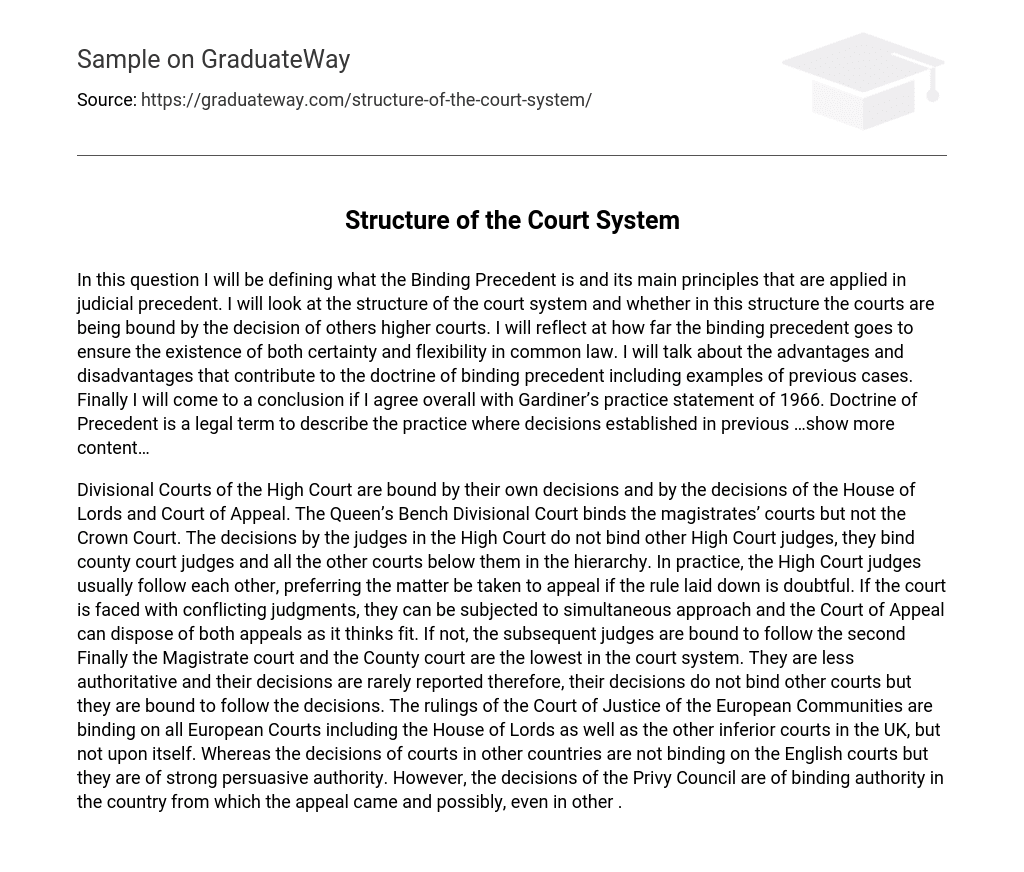The text examines the definition and principles of Binding Precedent in relation to judicial precedent. It explores whether lower courts are obligated to follow decisions made by higher courts and evaluates how binding precedent ensures certainty and flexibility in common law. The advantages and disadvantages of this doctrine, including examples from past cases, are discussed. Ultimately, the conclusion will be reached on agreement with Gardiner’s practice statement of 1966. The Doctrine of Precedent is a legal term that refers to making decisions based on previous rulings…
The Divisional Courts of the High Court are required to follow their own decisions, as well as decisions made by the House of Lords and the Court of Appeal. The Queen’s Bench Divisional Court has authority over magistrates’ courts but not the Crown Court. While High Court judges’ decisions do not bind other High Court judges, they do bind county court judges and all lower courts in the hierarchy. In general, High Court judges tend to comply with each other’s rulings, but if there is uncertainty, the matter can be appealed.
Conflicting judgments can be presented simultaneously to the Court of Appeal, which then has the power to decide on both appeals. Magistrate courts and County courts are located at the lowest level in the court system and their decisions are rarely reported. As a result, their decisions do not impose obligations on other courts; however, they must adhere to previous rulings.
The Court of Justice of the European Communities has binding authority over all European Courts, including the House of Lords and other inferior UK courts (except itself). Decisions made by foreign courts do not have binding force on English courts but have significant persuasive influence.
Nevertheless, decisions made by the Privy Council carry obligatory authority in their country of origin and potentially in other contexts as well.





